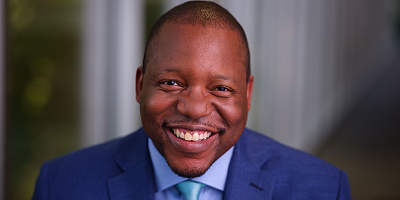As we evaluate and implement our return to the office in a world still facing the lasting impacts of a pandemic, we have a tremendous opportunity to reimagine who we are, what we want to accomplish, and how and where we can deliver value.
What we know for sure is that the new hybrid working environment is here to stay. A survey from PwC reveals that 83% of employers say the shift to remote work has been successful for their company. Because we're not returning to the way things were before, employers looking to design the future of work need to craft new and innovative strategies to be effective.
If there's one thing I've learned in my role as Protective's Executive Vice President and Chief Human Resources Officer, it's the importance of not just connecting with your employees but also allowing their feedback to be the guidepost for future planning. At the core of our future of work strategy is consistent, open and transparent communication with employees at every level of the organization and every step of the way.
Protective's return-to-office strategy
When over 75% of our employees told us they'd like to continue working from home to some degree post-pandemic, we quickly recognized the benefits of scaling back our physical footprint. Based on team performance and employee feedback, we made the decision in September 2020 to retire a number of our offices and focus on three core sites: Birmingham, Cincinnati and St. Louis. Those sites will house 44% of our workforce and act as hubs for new employee onboarding, in-person collaboration and strengthening our culture as a company through learning opportunities, team-building and other activities. Employees from the retired sites are now fully virtual. To establish these thriving hubs and support our robust virtual workforce, we began planning for our future of work.
Our strategy was based on the results of a series of employee assessments we facilitated over the last year to better understand concerns, needs, preferences and what employees valued in an office and in a virtual environment. We designed this plan in a very intentional way, based on employee experience and allowing us the ability to monitor and adjust along the way. For those returning to a core site, a few key highlights from our plan include a phased approach with leadership returning first, giving employees at least 30 days’ advance notice of their return date, frequent communications about their return, and continued monitoring of changes and developments around COVID-19.
Encouraging employee health and safety
Our emergency response team meets regularly to discuss how we enact workplace safety measures for those in our core sites, including the allocation of workspaces. These measures are based on reviewing government mandated protocols, guidance from the CDC, the health of our communities and our own experiences, including input from employee surveys.
We also have a team responsible for monitoring health guidelines on a weekly basis. Some of our current safety measures include:
- Encouraging self-monitoring every morning before coming into the office
- Requiring all employees to wear masks whenever they leave their workstation regardless of their vaccination status
- Enforcing physical distancing and capacity limits in common areas, including elevators
- Sanitation stations throughout all our core sites
- Keeping business-related visitors and travel to a minimum, subject to screening protocols
- Surveying employees on a quarterly basis and gathering in the moment feedback
A new approach to leading virtual, office and hybrid workforces
After learning new ways to adapt and lead in a fully virtual environment, we recognized the need for another shift as we adapt to and lead a distributed environment. We are now learning how to engage employees effectively and inclusively across multiple environments. Some employees will work from the office full-time, while others will be in a hybrid environment and others will work fully remote.
With this new environment, how do you create a sense of connection so that everyone feels included and has the opportunity to thrive? While the basics of leadership remain the same, many of our management practices had to be re-imagined. To support this transition, we launched the following tools and initiatives:
- A four-week leadership forum last June allowed leaders to share best practices (and struggles) in virtual panel discussions and build a support network. They are continuing the discussion and learning on a monthly basis as part of our “Lead From Anywhere” series.
- We provided our leaders with Inclusive Leadership training to ensure our future working strategies are inclusive and that all voices are being heard.
- We added questions to our quarterly Protective Voices employee survey to help leaders understand how staff are engaging in the workplace.
- We are continuing to use our people analytics tools to understand differences between our office-based, hybrid and virtual environments and measure factors such as differences in engagement, retention, rate of promotions and more.
Supporting employees' well-being
Staying connected and having the opportunity to re-establish routines and boundaries in a distributed environment represents yet another change, especially for those attempting to manage family obligations or support their own well-being.
To support our employees' well-being, we've put a range of measures in place:
- Coffee chats every Friday allow teams to connect to discuss well-being, learn about connective technology, and share community engagement opportunities.
- Employee assistance and wellness programs continue to offer physical and mental health support.
- A paid leave program allows employees who either contract COVID-19 or must take care of family members with COVID-19 additional time away from work.
- Ongoing employee surveys gauge engagement, effectiveness and well-being.
Since the beginning of the pandemic, we've ensured our employees retained a sense of connection to Protective even without being physically present in the office by fully utilizing platforms like Microsoft Teams and tools such as Qualtrics and Slido that allowed us to stay engaged with employees on a regular basis and during live virtual events. We also increased the frequency of letters from our CEO, held live video town halls each month and checked in regularly to identify which areas managers, HR and IT teams could provide support. These tools and consistent efforts to connect will remain in place to engage all employees across our distributed work environment.
The future of work is now
We already knew remote work could be effective, as 18% of our workforce was based from home prior to the pandemic. During COVID-19, we all had the opportunity to learn to lead from anywhere in order to effectively scale virtual work. As managers transitioned to the new virtual environment, and employees told us they were also enjoying it, we became confident that we had an incredible opportunity to ensure we were set up for success today and tomorrow.
Thanks to our efforts to be transparent and consistently communicating with employees, we got a good sense of where people were at and where they are willing to continue to go with us. There is no question that we are returning to a new normal. The future of work is now, and we are ready to keep learning and adapting as it continues to evolve.
Learn more about how Protective supported customers, employees and communities through COVID-19.
Wendy Evesque is Executive Vice President and Chief Human Resources Officer at Protective.





 To exercise your privacy choices,
To exercise your privacy choices,